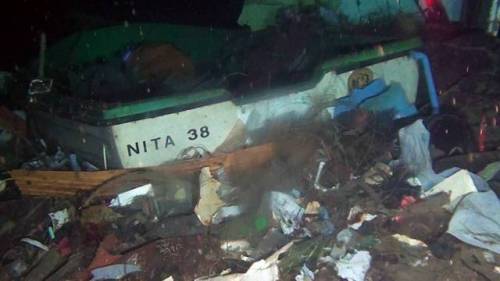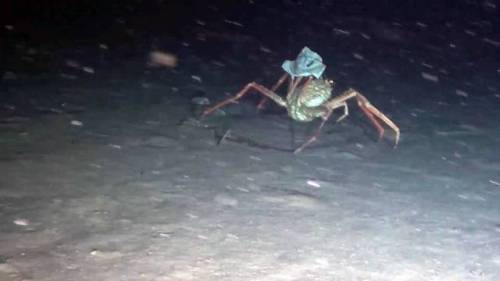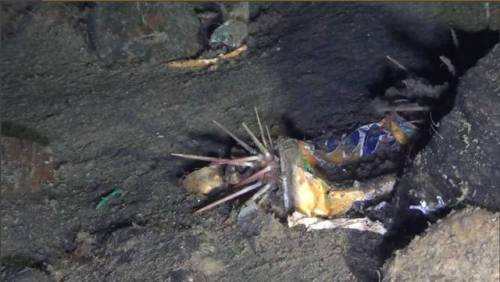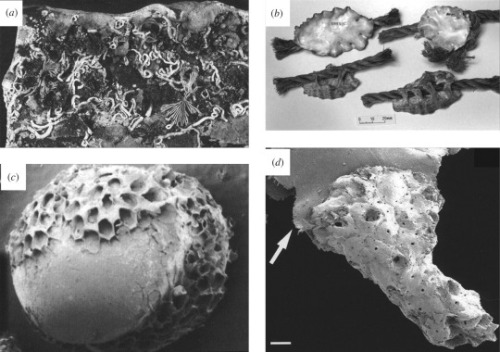#benthic marine litter
HUGE DUMP FOUND AT THE BOTTOM OF THE MEDITERRANEAN
Images obtained by an underwater exploration robot at the seafloor of the Strait of Messina in Italy, have revealed the largest concentration of garbage ever recorded in deep waters anywhere in the world.
The photos extracted from ROV video footage show examples of benthic litter accumulations observed within channels in the Messina Strait, including: bricks, tires, clothes and large metallic objects, small and large mounds, sometimes formed around large items such as a buried car and a sunken boat.
Litter is patchy but pervasive on all surveyed channels, reaching densities up to 200 items in 10 meters of observation. Such impressive amount of litter can be explained by submarine canyons acting as carrier of marine litter from shallow water to the deep sea and a strong urbanization of the coastal area.
- Reference (Open Access): Pierdomenico et al., 2019. Massive benthic litter funnelled to deep sea by flash-flood generated hyperpycnal flows. Scientific Reports.
Post link
PLASTIC BAG RECORDED AT BOTTOM OF MARIANA TRENCH
The world’s deepestplastic bag has been found at the bottom of the Pacific Ocean’s Mariana Trench, at 10,898 m. Plastics are ubiquitous even at depths under 6000 m, most of them are single-use products.
The findings comes from over 5,000 separate dives using deep-sea remote vehicles (ROVs). But not only plastic was found, also metal, rubber, fishing gear, glass and various other man-made items. The study showed association of plastic debris with deep-sea biota, which was relatively frequency, 17% of debris images were found with at least one organisms. Researchers found entanglement of plastic bags in the cold seep communities.
According to japaneses researchers who conducted the study, plastic debris, particularly single-use products, has reached the deepest parts of the ocean. Whereas regulation on the production of single-use plastic and the flow of such debris into the coast are the only effective ways to prevent further threats to deep-sea ecosystems, successful management of plastic waste is possible through internationally harmonized practices based on scientifically sound knowledge.
Surprising, this moment was observed by ROV KAIKO on May 20th, 1998, more than 20 yeas ago.
Post link
Ateenage diver found tons of golf ball accumulating on the seafloor off Pebble Beach, near Carmel, California, a beach very close a Golf Club.
She, we the helpt of an expert, and volunters, removed 39,602 golf balls from intertidal and nearshore environments near Carmel, California, and combined with concurrent cleanup efforts, they report the retrieval of 50,681 balls, approximately 2.5 tons of debris.

- A harbor seal (Phoca vitulina) swimming near a dense aggregation of golf balls, and a threatened southern sea otter (Enhydra lutris nereis) handles a golf ball.
According to authors of the study, golf ball pollution is likely an underreported problem associated with coastal courses worldwide. Nearshore marine environments in close proximity to golf courses may similarly accumulate debris and should be surveyed to develop context-dependent mitigation strategies. Marine plastic pollution is a diffuse and seemingly intractable global problem, but the identification and remediation of known point sources of pollution is a tangible step in reducing the deleterious impacts of anthropogenic activity on marine systems
- Photo: Several examples of dense aggregations of hundreds of golf balls encountered in the nearshore environment at the Pebble Beach study site.
- Reference: Kewer et al., 2019. Quantifying marine debris associated with coastal golf courses Marine Pollution Bulletin.
[Photo description: dense aggregations of golf balls]
Post link
Pelagic plastic items are commonly colonized by a diversity of encrusting and fouling animals. Most of these are sessile, hard-shelled or crustose organisms and dominated by moss animals (bryozoans). Also included are barnacles, tube worms, foraminifera, coralline algae, hydroids and bivalve molluscs.
Aggregations of marine debris can provide habitats suiting the larval and juvenile stages of numerous marine organisms. They may also attract free-living, ocean-roaming predators that often gather under fish aggregating devices, and where others simply sought a protective haven.
Example of colonization and encrustation on plastic debris from the New Zealand coastline:
(a) Heavy and varied colonization of a plastic slab recovered (note the hard bodied encrustations and soft fleshy epibionts.
(b) Cuttings from a tangled mass of synthetic rope, carrying a cargo of the warm-water Indo-Pacific oyster, Lopha cristagalli, a species that is alien to New Zealand waters.
© Plastic pellet (raw material for manufacture of plastic products) encrusted by the bryozoan Membranipora taberculata.
(d) Small bryozoan colony (Galeopsis mimicus) attached to a frayed plastic flake (arrowed) recovered from a depth of 393 m off the east coast shelf off the South Island. scale bar 0,2 mm.
- Reference (Open Access): Gregory, 2009. Environmental implications of plastic debris in marine settings—entanglement, ingestion, smothering, hangers-on, hitch-hiking and alien invasions. Philosophical Transactions of the Royal Society B: Biological Sciences.
Post link
This is outside Nesoddtagen in the Oslofjord in Norway.
Over 8 million tons of plastic ends up in the ocean every year. That is 15 tons every minute, 365 days a year. Estimates calculate that over 70% of this garbage ends up on the ocean floor.
How does the ocean floor look like at your local area?
- video:FredrikMyhre (1:33 min)







